Somnath Series: Mahatma Gandhi’s centrist stand on Somnath temple restoration
September 05, 2017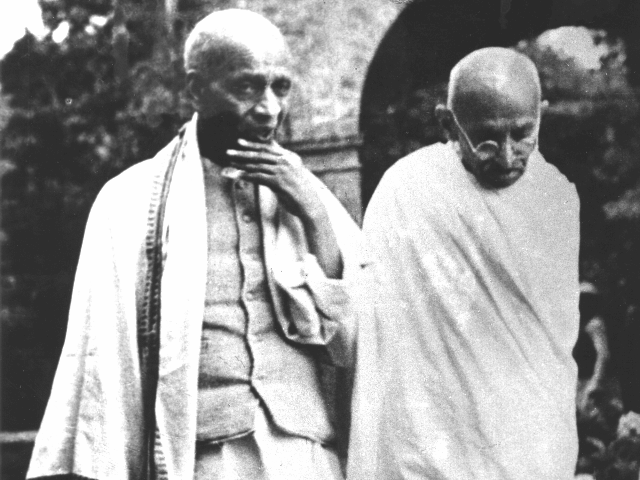
Somnath Series by Japan K Pathak
 In this series, I intend to cater various articles on Somnath temple, covering the period between its last destruction and final reconstruction. To clear any doubts or to obtain more details, you can reach me at my email address japanpathak [at] deshgujarat [dot] com.
In this series, I intend to cater various articles on Somnath temple, covering the period between its last destruction and final reconstruction. To clear any doubts or to obtain more details, you can reach me at my email address japanpathak [at] deshgujarat [dot] com.
In the previous article which was the third article in this series you read how in 1947 when the rule of Britishers and Nawab came to an end , Sardar Patel, Gadgil, Jam Saheb and others paid visit to ruins of Somnath temple during which a decision was taken for construction of a grand new Somnath temple on the same site. Today’s article which is the fourth in this series throws light on Mahatma Gandhi’s reaction to the decision of reconstruction of Somnath temple, and how Gandhi’s stand proved helpful for the project.
Gadgil’s idea was to reconstruct the Somnath temple through government resources
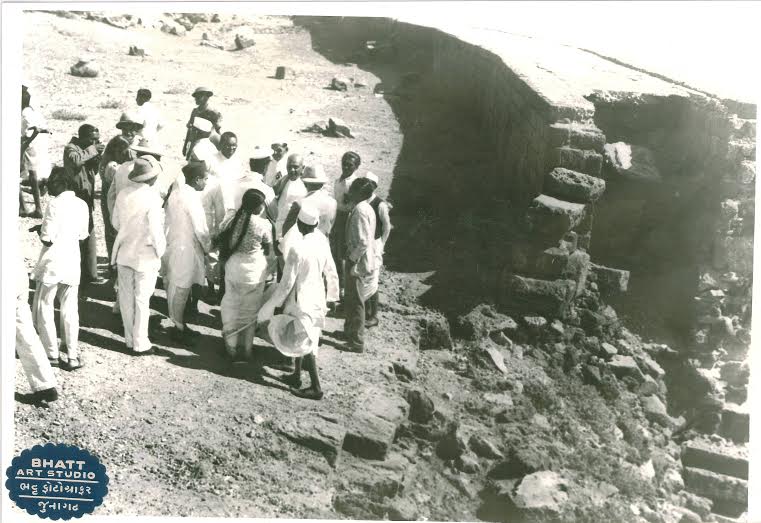
As I mentioned in previous article, it was November 12, 1947 when Sardar Vallabhbhai Patel joined by Gadgil, Jam Saheb and others visited the site of ruined Somnath temple and announced reconstruction of Somnath temple.
Gadgil in his book ‘Government from inside’ writes: “With Sardar’s consent, standing at the main entrance of the temple I announced Government of India’s decision to rebuild the temple with intention to restore the ancient glory of the Somnath once was.”
Munshi in his book Somnath – the shrine eternal quotes Gadgil as saying: “We saw the temple. While Sardar and I were having a little walk on the beach, I said to Sardar: ‘I think the Government of India ought to re-build this temple.‘
“He said: ‘well, go ahead.’
“Then we two and the Jam Saheb came to the temple and there in the presence of about 500 people, I announced: ‘Government of India have decided to re-build this temple and install the deity.’
‘This Government has come to fulfill and not to destroy. The age of reconstruction is now on.”
Gandhi’s nod to reconstruction move, but with a condition
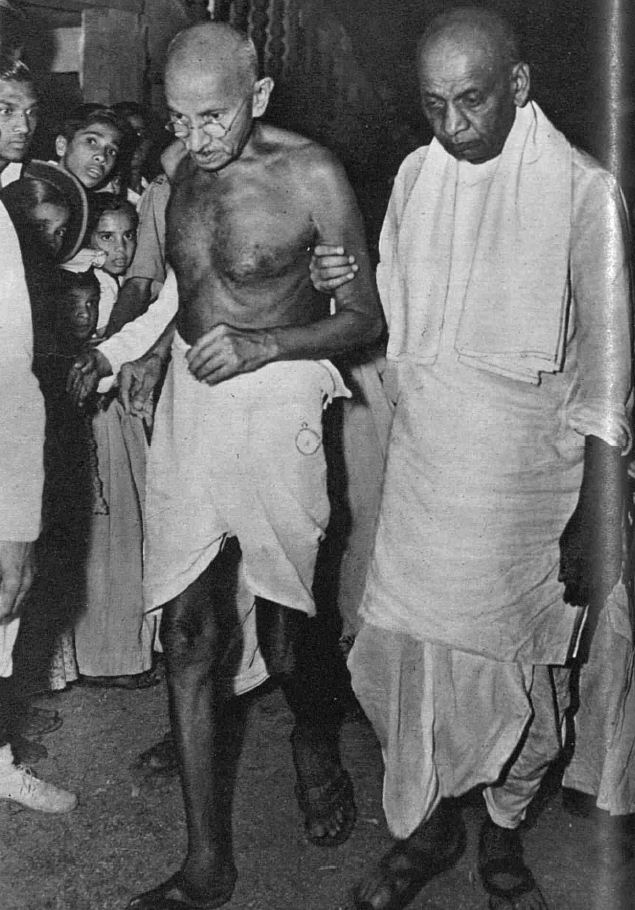
16 days after this announcement, Mahatma Gandhi supported this move but with rider.
Mahatma Gandhi’s role in reconstruction of Somnath temple was not direct, but still very significant. If Gandhi had taken a position aligned to Jawaharlal Nehru and Nehru’s version of secularism, the reconstruction of Somnath temple in that case could be a very challenging task for Sardar Patel and others and perhaps impossible too.
Look at this chart which describes the positions taken by three who mattered:
| Nehru’s Left Approach | Gandhi’s Centrist Approach | Gadgil’s Right Approach |
|---|---|---|
| Against the idea of reconstruction of Somnath temple. Believed it’s revivalism move. His such stand is evident in his letters which you would read in upcoming chapters of this series. Nehru was not only adverse to govt financing to Somnath reconstruction but also against all other kinds of govt support to the task. | Gandhiji was in favor of Reconstruction of the Somnath temple but not through government fund. Sardar Patel told him, he was in agreement to this stand. However neither Gandhi, nor Sardar were against other kinds of Govt support/assistance to the project. | Gadgil was for reconstruction of Somnath temple through government resources. Sardar had initially not objected to this approach, but after meeting Gandhiji over this issue, Sardar and even Gadgil agreed to Gandhiji’s approach. Barring financing, the govt continued to extend support in other manners to Somnath reconstruction project despite of objections raised by Nehru, more frequently after death of Sardar. |
Gandhi’s position was a balanced one. While he favored reconstruction of Somnath temple, he also made it clear that government fund must not be used for this task.
Gandhiji in his last phase of life would address prayer meetings at Birla House in Delhi. He would react to various letters and newspaper reports during his address at prayer meetings. As V. Shankar(personal assistant to Sardar Patel) in his memoirs mentions, Gandhiji’s camp(t Birla House in Delhi) had become a venue in which those hostile to Sardar could freely pour their venom.
Gandhiji’s stand on Somnath is known through his three speeches in prayer meetings in November/December 1947 in which he mentioned Somnath.
A Christian questions renovation of Somnath from State funds; Gandhi reacts
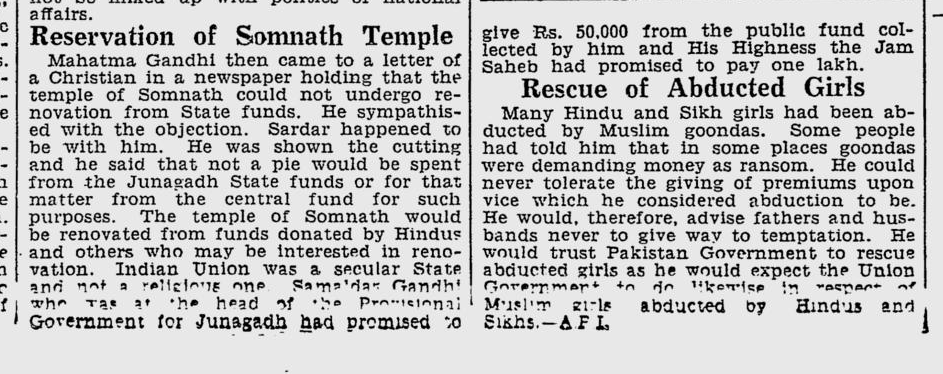
On 28 November 1947 Gandhiji at prayer meeting, referred to a letter of a Christian in a newspaper holding that the temple of Somnath could not undergo renovation from State funds. Gandhiji sympathized with Christian person’s objection.
Gandhiji said:
One brother writes to me that the temple of Somnath that was there will be reconstructed. For that money is needed and there in Junagadh, the Aarzi Hukumat formed by Shamaldas Gandhi is going to contribute Rs 50,000. Jamnagar has made announcement to give Rs 1 lakh.
When Sardarji today came here I asked him whether being Sardar he would acquiesce a govt that gives as much money as it liked for Hindu dharma. Government has been formed for all. There’s this word ‘secular’ for it in English. It means it is not some theocratic government, or let’s say it this way, it doesn’t belong to one religion. So it can’t do something like, let’s spend so and so amount of money for Hindus, so and so for Sikhs and so and so for Muslims. We have only one thing, and it is that all people are Hindi. Individuals can follow their own dharma. I have my dharma and you have yours to follow.
Another gentleman has written well in a note. He says that it would be gross adharma if either the Junagadh Government or the Union Government gives money for the renovation of the Somnath temple. I think he has made a correct point.
I then asked the Sardar if that was true. He said that that was not possible so long as he was alive. He said not a single pie could taken out from the treasury of Junagadh for the renovation of the Somnath temple. If he was not going to do it, he said, what could poor Shamaldas do alone? There were enough number of Hindus who could donate money for the Somnath temple. If they became miserly and did not part with money, let the temple remain in its presence state. There were already a lakh and a half rupee and Jamsaheb had already given a lakh. They would be able to manage more. (speech at prayer meeting, November 28, 1947).
A correspondent questions why not govt fund for Somnath temple; Gandhi reacts

Somnath temple move found mention in another prayer meeting of Mahatma Gandhi. This one on December 12, 1947. If the previous mention was in reaction to a Christian, this one was probably in response to a Hindu correspondent who was wishing for (Govt) fund for Somnath temple.
Mahatma Gandhi said:
A correspondent wants money to be made available for the renovation of the Somnath temple.
The Sardar had agreed that the temple should be renovated but that the money should not be taken from the Junagadh treasury or the treasury of the Government of India.
The correspondent asks why the money should not thus be made available. I do not with to go into the question in any detail.
All I can say is that if money is taken from the Government for this purpose, then the same rule should apply to other cases also. It will have far-reaching consequences. (Speech at prayer meeting, December 12, 1947)
Urdu magazine opines, if Somnath is renovated it will have to be avenged; Gandhi reacts

If on previous occasions, Mahatma Gandhi referred to a letter in newspaper by a Christian person questioning Somnath move, on December 25, Mathatma Gandhi in his prayer meeting speech reacted to an article in Urdu magazine, probably by some Islamist.
Gandhiji said:
I saw a couplet in an Urdu magazine today. It hurt me.
I do not remember the words but the substance is this: “Today Somnath is on the tongue of everyone. If the temple is renovated it will have to be avenged. A new Ghaznavi must come from Ghaznavi to avenge what happened in Junagadh.”
This is very bad. This must not come out from a pen of any Muslim of the Union.
I have said that I must do or die; which means that I shall either bring about Hindu-Muslim amity or lay down my life. This sort of this cannot affect my resolve.
I can not return evil for evil. I can only return good for evil. I tell you all this so that you may not be taken in by such things.
What Ghazanavi had done was very wrong. Muslims should realize and admit the wrong perpetrated under the Islamic rule. The Hindu and Sikh rulers of Kashmir and Patiala, etc., should also admit the excesses committed in their States. There is nothing to be ashamed of in confessing one’s sins, it only lightens one’s guilt.
If Muslims in the Indian Union teach their children that a Ghaznavi must come to avenge them and destroy the Hindus, who is going to tolerate this?
If this mischievous couplet had not been published in an important magazine, I would not even have mentioned it.(Speech at prayer meeting, December 25, 1947)
How Mahatma Gandhi helped the cause of Somnath temple reconstruction
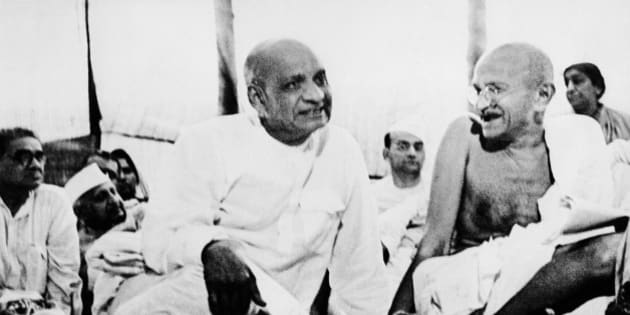
If you look at the full picture, Gandhiji actually helped reconstruction of Somnath temple by endorsing the idea itself. While Sardar, Gadgil, the local government in Saurashtra and we believe many countrymen were in favor of reconstruction of Somnath temple, there were probably some Muslims, Christians and Nehruvian secular class among Hindus who were uneasy about the idea. We will see in next chapters that on what scale Nehru had problem with the idea of reconstruction of Somnath temple.
Suppose if Gandhiji had taken Nehruvian secular line and opposed the idea of reconstruction of Somnath temple, then in that case the Nehruvian secular class joined by Islamists and others could have surely created lot of troubles for the project, especially after the death of Sardar. Mahatma Gandhi’s nod to reconstruction provided shield to Sardar, Gadgil, Jam Saheb and Munshi against heartburn among Nehruvian secularists and others. As Gandhiji favored the reconstruction move, all Nehru could do was giving occasional push for disassociation of government from the project(we will see that in detail in next chapters of this series). Gandhiji mentioned Somnath thrice in is November/December 1947 prayer meetings and died in January 1948 but his nod for reconstruction of Somnath ( so what if conditional) didn’t allow Jawaharlal Nehru and his style of secularists to openly and vehemently oppose the move of reconstruction. You will realize the important of Gandhiji’s centrist stand only after reading Nehru related chapters of this series. About financing of the project, Gandhiji was perhaps very well aware that it could be managed by Sardar easily through non-governmental resources.
Idea of govt financing the reconstruction given up

Kanaiyalal Munshi in his book Somnath the shrine eternal mentions:
On December 13, 1947, the Standing Committee of the Ministry of Works, Mines and Power of the Government of India sponsored the scheme. The committee accepted Gadgil’s proposal that the Government of India should reconstruct the temple in the original form and develop roughly one square mile of the surrounding area. I understand that this decision was included in the Weekly Note to the Cabinet. As I learn from Gadgil, it was also mentioned to the Cabinet. At the time, the policy of the Government was that the W.M.P. Ministry should reconstruct the old shrines and they were so doing in the case of certain Muslim shrines and mosques. The Government of India (Gadgil, the Minister in-charge) thereafter deputed Government architects to visit Prabhas and prepared a report for the reconstruction of the temple. When the whole scheme was discussed by Sardar with Bapu, he stated that it was all right except that the funds necessary for reconstructing the temple should come from the public. Sardar under the advice of Gandhi decided that the Government should not make any contribution in the form of money for the reconstruction of the temple. Gadgil also saw Bapu and Bapu gave him the same advice. Thereafter, the idea that the Government of India should finance the reconstruction of the temple was given up.
Gadgil continued to believe, govt finance for Somnath temple was valid and better way

Gadgik in his book writes: Earlier it had been decided to undertake the work through the Central Government. Nehru did not approve. On Gandhiji’s advice, it was decided to entrust the work to a Trust which woud have one representative of the Central Government……
…..Government of India had spent about hundred thousand rupees on that work (Somnath). I pointed out that the Government gave subsidies and grants to thousands of mosques and tombs and there could be nothing objectionable if it spent a little money in restoring a Hindu temple. I understood secularism to mean the equality of all religions. The restoration of the Somnath temple had earned for the Government the goodwill of million of people and had made the creation of the Saurashstra State easy. Millions of Hindus are idol-worshippers and not intellectuals like Nehru. ‘Some of us are subject to the weakness of a firm faith,’I said.
Sardar started redrawing financing plans for restoration of Somnath temple
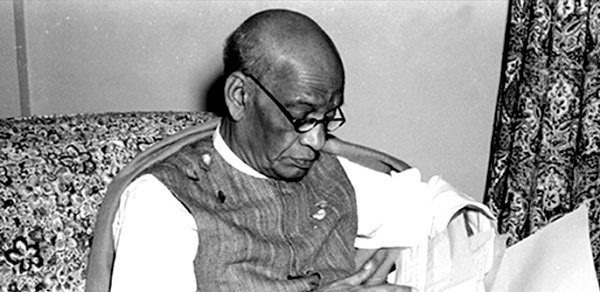
In 27 December 1947 letter in reply to Babulal Upadhyay of Ahmedabad, Sardar Vallabhbhai Patel said: I received your 30th November letter. There’s no need at present to issue a public appeal to collect fund necessary for Somnath renovation. At present I am trying to collect the fund through some other alternative. Meanwhile the task of preparing maps and estimates with the help of sculptures is going on. If God wills, all will be over without any obstruction(page 47, Sardarshri na patro – 2. Gujarat na sathione, Janm shatabdi granth – 2, compiled by Maniben Patel, G.M. Nandurkar)
Sardar had later on the occasion of Maha Shivratri in year 1948 issued a public appeal for contribution to Somnath temple cause and managed to collect the fund according to Maniben’s footnote on the same page in same book(mentioned above).
I will throw more light on some interesting details on financing of Somnath temple restoration in coming chapters of this series.
Previous article in this series
Related Stories
PM Modi to lay foundation stone for construction of Parvati Mandir in Prabhas Patan
In pictures: PM Modi to dedicate Somnath Exhibition Gallery
Somnath Series: How Jawaharlal Nehru opposed President Rajendra Prasad's decision to attend Somnath ceremony
Nehru had asked I&B minister to tone down the description of Somnath Pran Pratishtha ceremony in radio broadcast
Somnath Series: When President Rajendra Prasad presided the installation ceremony of Somnath Shivalinga
Somnath Series: How a decision to replace ruined old Somnath temple with a new grand one arrived at
Somnath Series: Historic visit by Sardar Patel, Gadgil, Jam Saheb that paved the way for reconstruction of ruined Somnath temple
#SomnathSeries : Ruined and ravaged Somnath temple as described by visitors in 19th and 20th centuries
#SomnathSeries : The last destruction of Somnath temple and Gujarat under Aurangzeb
Recent Stories
- Surat Congress candidate Nilesh Kumbhani's nomination form facing invalidation procedure
- ACB Gujarat decoy traps private hospital's staffer for bribery
- Chaitar Vasava has 13 FIRs against him under over 30 IPC sections in 3 police stations
- WR to run 2 pairs of Sabarmati-Barmer Special trains for summer
- ACB Gujarat files offence against SK Langa and son for disproportionate asset
- Kshatriya agitators announce part-2 programs in Gujarat
- FM Sitharaman on Gujarat visit
